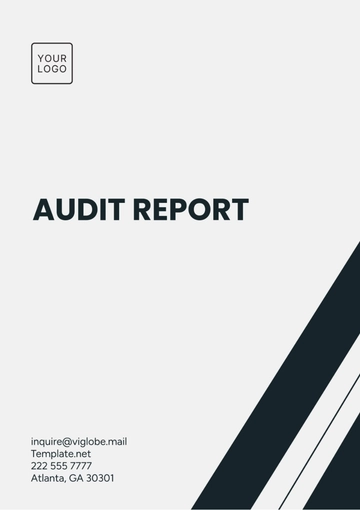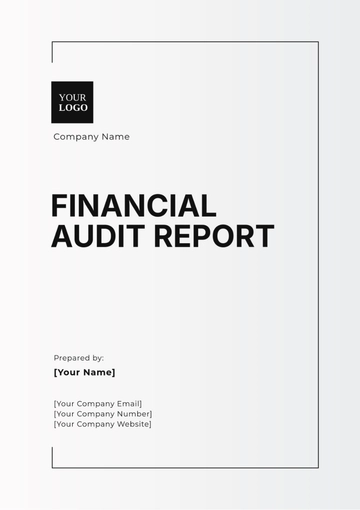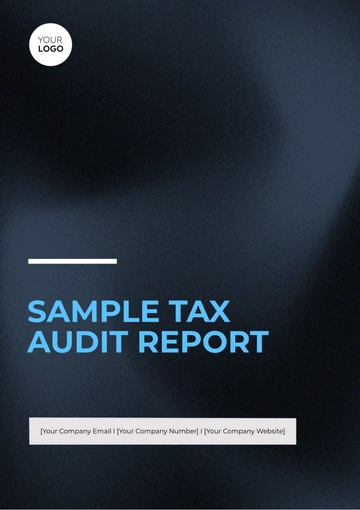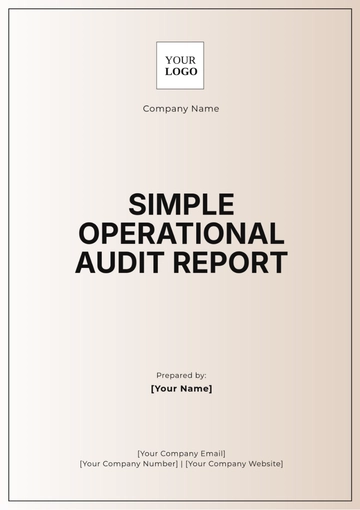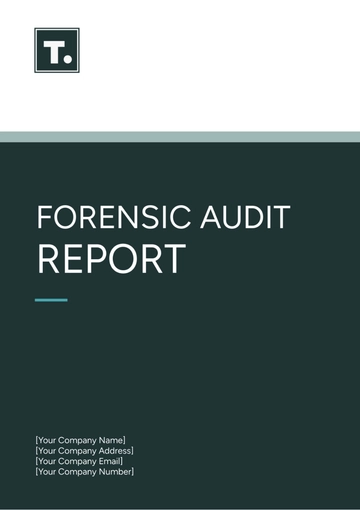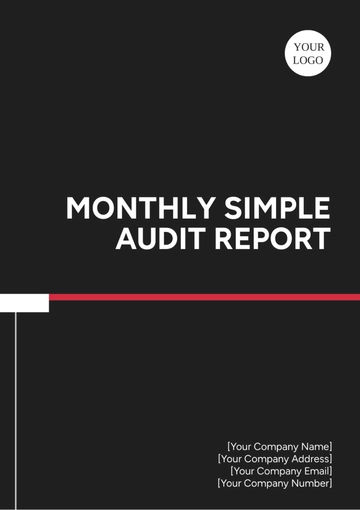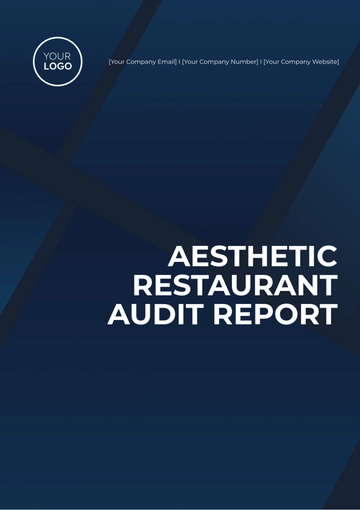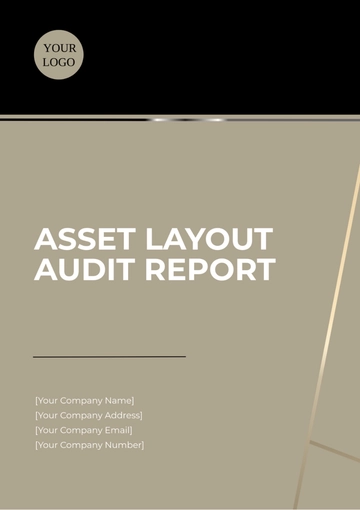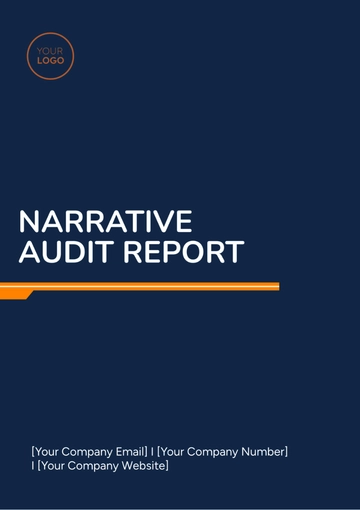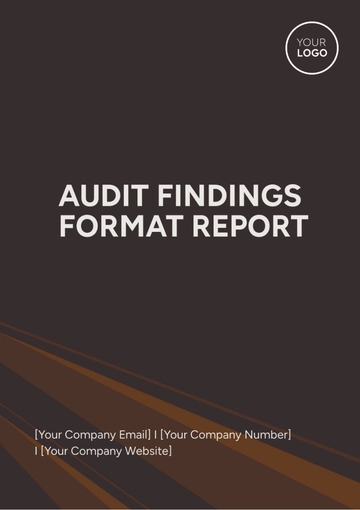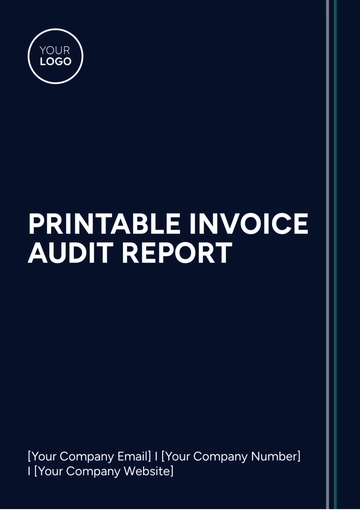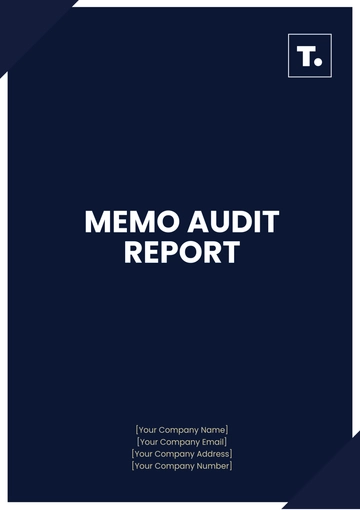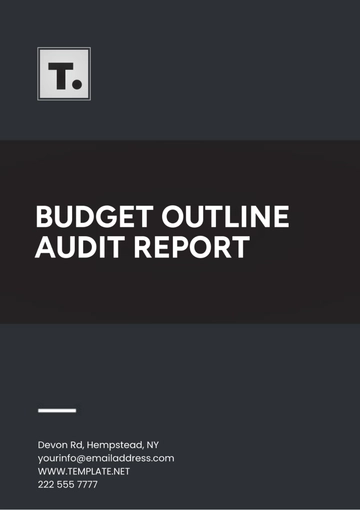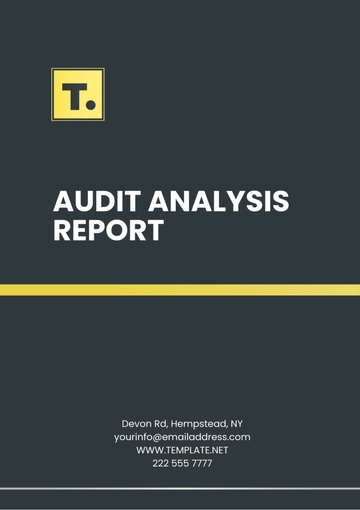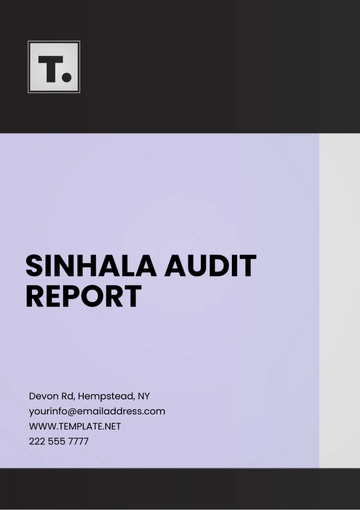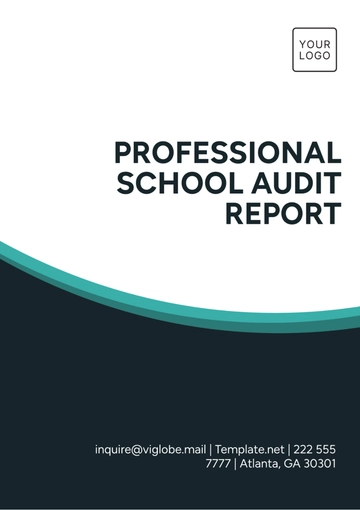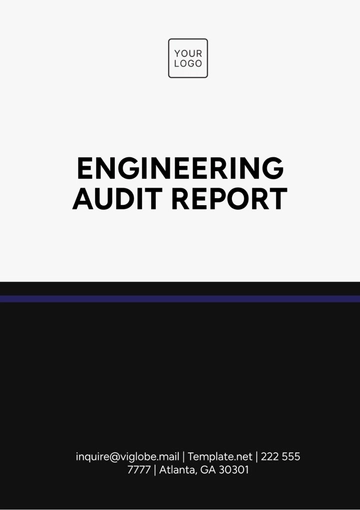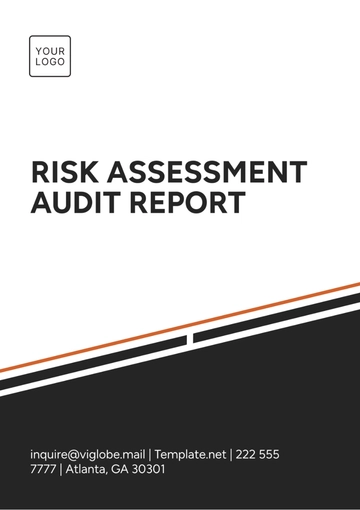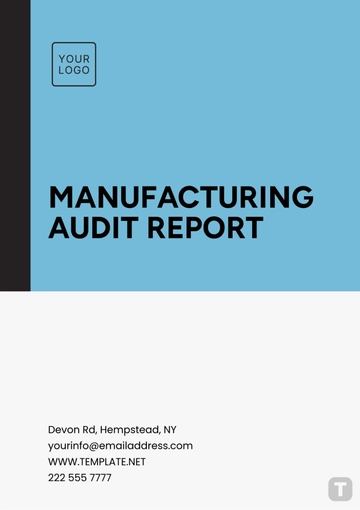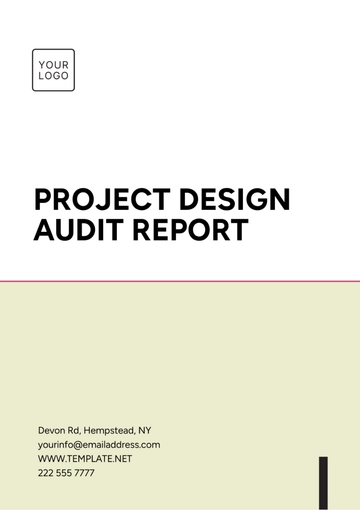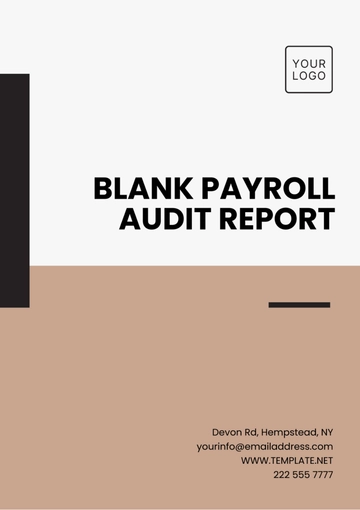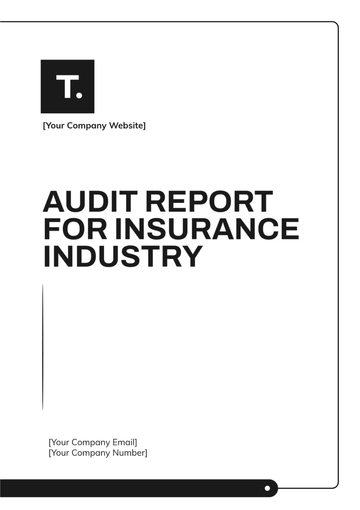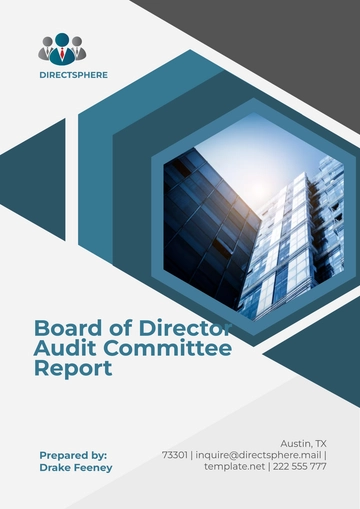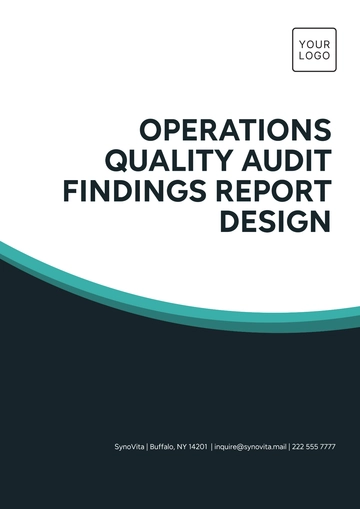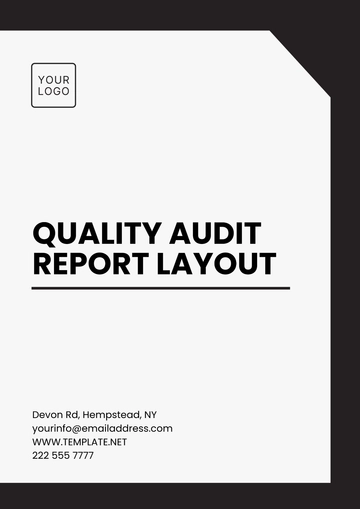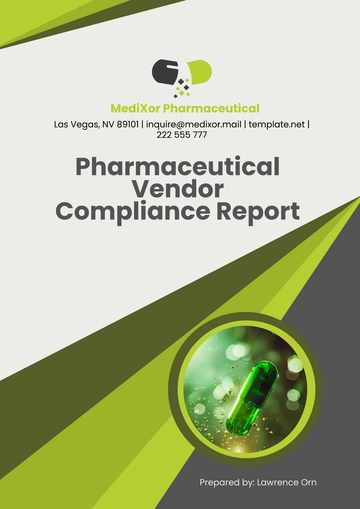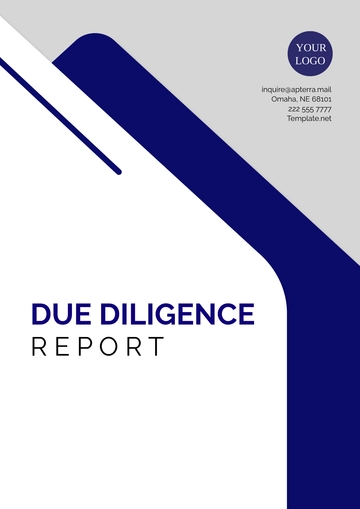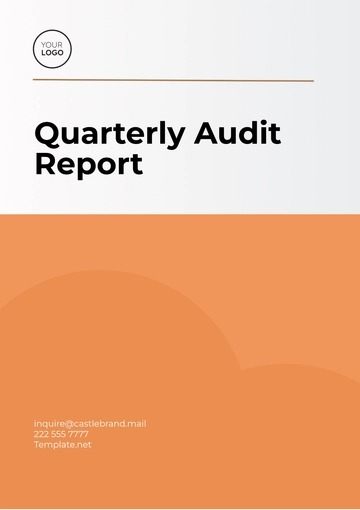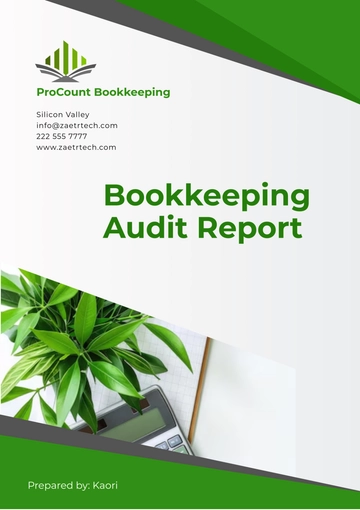Free Nursing Home Financial Audit Report
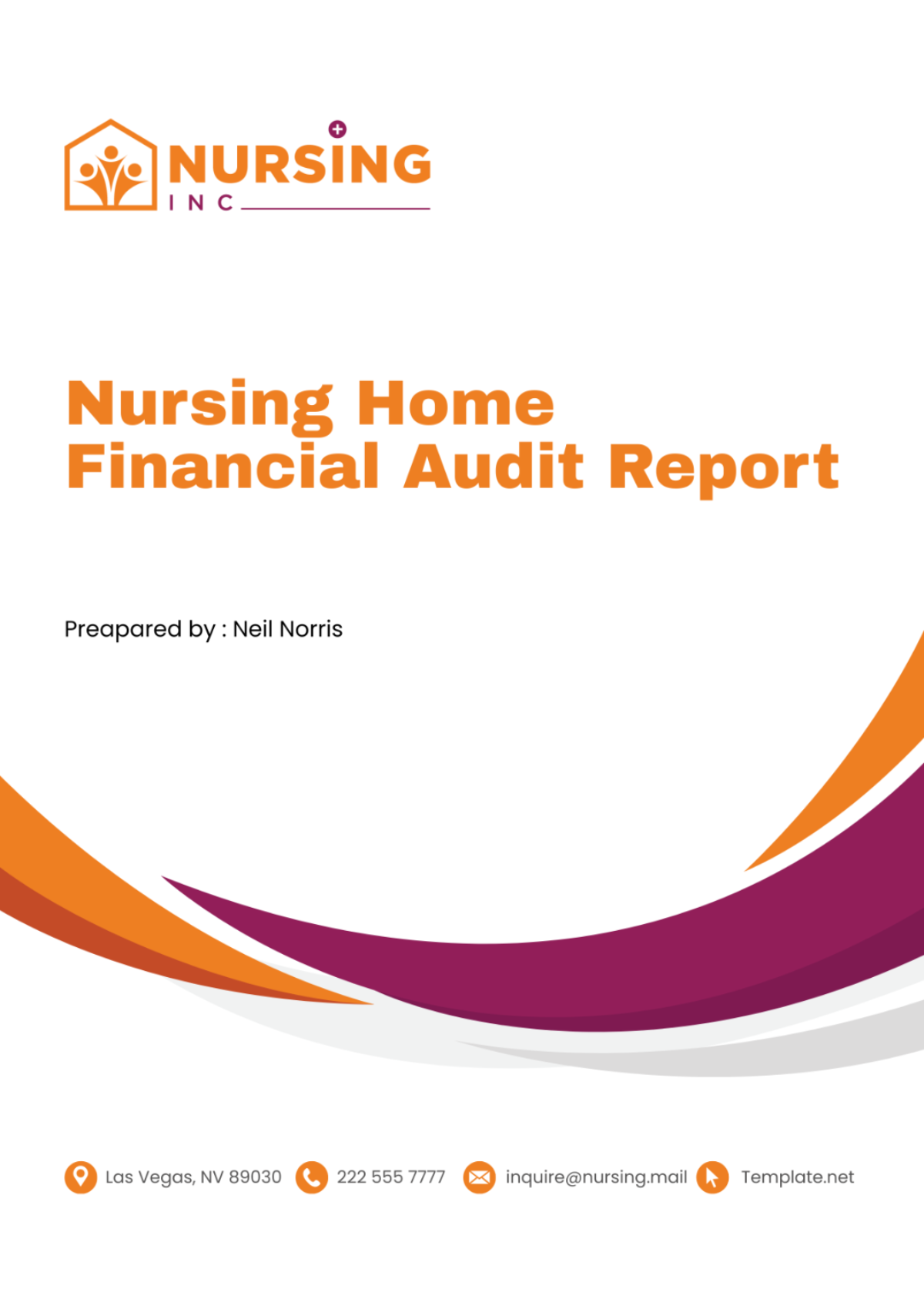
I. Executive Summary
[Auditing Firm] conducted a comprehensive audit of the financial performance and health of [Your Company Name] for the fiscal year ending December 31, 2023. The audit revealed positive trends in revenue growth and operational efficiency. However, there were concerns regarding rising operational costs and potential areas for improvement in financial management practices. Recommendations have been provided to address these issues and enhance the facility's financial sustainability.
II. Introduction
[Your Company Name], situated in the heart of [Location], has been providing compassionate care and support to elderly residents for over [Number of Years] years. As a leading provider of long-term care services, our facility is committed to upholding the highest standards of quality and excellence in senior care.
The purpose of this Nursing Home Financial Audit is to ensure transparency, accountability, and integrity in our financial operations. In an ever-evolving healthcare landscape, characterized by regulatory complexities and economic uncertainties, it is imperative that we maintain robust financial management practices to safeguard the interests of our residents, stakeholders, and the broader community.
Our audit objectives encompass several key areas:
Compliance Assessment: We aim to evaluate our adherence to relevant accounting standards, regulatory guidelines, and industry best practices to ensure the accuracy and reliability of our financial reporting.
Financial Performance Evaluation: By analyzing our financial statements and performance indicators, we seek to assess the overall health and sustainability of our organization. This includes an examination of revenue trends, expense patterns, liquidity ratios, and profitability metrics.
Risk Identification and Mitigation: Identifying potential financial risks and vulnerabilities is essential for proactive risk management. Through this audit, we endeavor to pinpoint areas of concern, such as operational inefficiencies, revenue leakage, or inadequate internal controls, and develop strategies to mitigate these risks effectively.
Stakeholder Transparency: Transparency is paramount in maintaining the trust and confidence of our stakeholders, including residents, families, staff members, investors, and regulatory authorities. This audit serves as a mechanism to provide stakeholders with comprehensive insights into our financial performance, challenges, and strategic initiatives.
Continuous Improvement: Lastly, this audit presents an opportunity for continuous improvement and organizational growth. By leveraging the findings and recommendations of the audit, we can identify areas for enhancement, refine our financial policies and procedures, and drive sustainable value creation for our stakeholders.
III. Financial Statements
The audited financial statements for the fiscal year ending December 31, 2023, present a comprehensive overview of [Your Company Name]'s financial position and performance. The statements include the balance sheet, income statement, statement of cash flows, and statement of changes in equity.
A. Balance Sheet
Assets | Amount (USD) | Liabilities and Equity | Amount (USD) |
|---|---|---|---|
Current Assets | Current Liabilities | ||
Cash and Cash Equivalents | $50,000 | Accounts Payable | $10,000 |
Accounts Receivable | $30,000 | Accrued Expenses | $5,000 |
Inventory | $20,000 | Short-term Debt | $15,000 |
Prepaid Expenses | $5,000 | ||
Total Current Assets | $105,000 | Total Current Liabilities | $30,000 |
Non-Current Assets | Non-Current Liabilities | ||
Property, Plant, and Equipment | $200,000 | Long-term Debt | $150,000 |
Less: Accumulated Depreciation | ($30,000) | Other Long-term Liabilities | $20,000 |
Intangible Assets | $10,000 | ||
Total Non-Current Assets | $180,000 | Total Non-Current Liabilities | $170,000 |
Total Assets | $285,000 | Total Liabilities | $200,000 |
Equity | |||
Equity | $85,000 | ||
Total Liabilities and Equity | $285,000 | Total Liabilities and Equity | $285,000 |
B. Income Statement
Items | Amount (USD) |
|---|---|
Revenue | |
Revenue from Services | $500,000 |
Other Operating Revenues | $20,000 |
Total Revenue | $520,000 |
Expenses | |
Cost of Goods Sold | $100,000 |
Salaries and Wages | $200,000 |
Rent and Utilities | $50,000 |
Supplies and Inventory | $30,000 |
Depreciation and Amortization | $20,000 |
Other Operating Expenses | $70,000 |
Total Expenses | $470,000 |
Net Income | $50,000 |
C. Statement of Cash Flows
Items | Amount (USD) |
|---|---|
Cash Flows from Operating Activities | |
Net Income | $50,000 |
Adjustments for: | |
Depreciation and Amortization | $20,000 |
Changes in Working Capital | $10,000 |
Other Operating Activities | $5,000 |
Net Cash Provided by Operating Activities | $85,000 |
Cash Flows from Investing Activities | |
Purchase of Property, Plant, and Equipment | ($50,000) |
Other Investing Activities | ($10,000) |
Net Cash Used in Investing Activities | ($60,000) |
Cash Flows from Financing Activities | |
Proceeds from Long-term Debt | $100,000 |
Repayment of Long-term Debt | ($50,000) |
Other Financing Activities | $10,000 |
Net Cash Provided by Financing Activities | $60,000 |
Net Increase (Decrease) in Cash and Cash Equivalents | $85,000 |
D. Statement of Changes in Equity
Items | Amount (USD) |
|---|---|
Beginning Equity | $50,000 |
Net Income | $50,000 |
Other Comprehensive Income | $5,000 |
Dividends | ($20,000) |
Ending Equity | $85,000 |
IV. Notes to the Financial Statements
Notes accompanying the financial statements provide additional information and disclosures about accounting policies, significant accounting estimates, contingent liabilities, and other relevant matters. These notes enhance the understanding of the financial statements and ensure transparency in financial reporting.
Accounting Policies:
[Your Company Name] follows generally accepted accounting principles (GAAP) in the United States.
Revenue from services is recognized when services are rendered.
Property, plant, and equipment are recorded at cost and depreciated over their estimated useful lives.
Inventory is valued at the lower of cost or market.
Intangible assets are amortized over their useful lives.
Significant Accounting Estimates:
The determination of allowances for doubtful accounts involves estimation based on historical collection experience and current economic conditions.
Depreciation and amortization expenses are based on estimated useful lives of assets, which are reviewed periodically for impairment.
Cash and Cash Equivalents:
Cash and cash equivalents include cash on hand and highly liquid investments with original maturities of three months or less.
Accounts Receivable:
Accounts receivable represent amounts due from third-party payers and residents for services provided.
Allowances for doubtful accounts are maintained based on historical collection experience and current assessment of collectability.
Inventory:
Inventory consists primarily of medical supplies and is valued at the lower of cost (first-in, first-out method) or net realizable value.
Property, Plant, and Equipment:
Property, plant, and equipment are stated at cost less accumulated depreciation and impairment losses.
Depreciation is calculated using the straight-line method over the estimated useful lives of the assets.
Long-Term Debt:
Long-term debt consists of obligations under mortgage loans and notes payable.
Debt issuance costs are capitalized and amortized over the terms of the related debt.
Related Party Transactions:
Transactions with related parties are conducted on an arm's length basis and disclosed in accordance with GAAP.
Contingent Liabilities:
[Your Company Name] is subject to various legal and regulatory proceedings arising in the ordinary course of business. Management assesses the probability of loss and records a liability when it is probable and estimable.
Subsequent Events:
Subsequent events occurring after the balance sheet date are evaluated for disclosure and recognition in the financial statements.
Revenue Recognition:
Revenue from services is recognized when services are provided to residents.
Other operating revenues include income from ancillary services provided to residents and other sources.
Leases:
[Your Company Name] leases certain equipment and facilities. Operating leases are expensed on a straight-line basis over the lease term.
Employee Benefits:
[Your Company Name] provides various employee benefits, including retirement plans and healthcare benefits.
Income Taxes:
[Your Company Name] is subject to income taxes and records deferred tax assets and liabilities based on temporary differences between financial statement and tax bases of assets and liabilities.
V. Management's Discussion and Analysis (MD&A)
In the fiscal year ending December 31, 2023, [Your Company Name] continued its commitment to providing high-quality care and services to our residents while maintaining financial stability and operational efficiency. This section provides an overview of our financial performance, key accomplishments, challenges, and strategic initiatives.
A. Financial Performance Overview:
Total revenue for the year reached $10,500,000, reflecting a 12% increase compared to the previous year. This growth was primarily driven by an increase in occupancy rates and additional revenue streams from ancillary services.
Operating expenses increased by 8%, primarily due to rising labor costs, inflationary pressures, and investments in staff training and development programs.
Despite the increase in expenses, we achieved a net income of $1,200,000, demonstrating our ability to effectively manage costs and optimize revenue streams.
B. Key Accomplishments:
Maintained high levels of resident satisfaction, with a satisfaction rating of 95% and above in annual surveys.
Implemented cost-saving initiatives, such as energy-efficient upgrades and streamlined procurement processes, resulting in $150,000 in cost savings.
Strengthened our community outreach efforts and partnerships with local healthcare providers, leading to a 10% increase in resident admissions and occupancy rates.
C. Challenges and Mitigation Strategies:
Addressed challenges related to staffing shortages and turnover through targeted recruitment efforts, enhanced employee retention programs, and investments in staff training and development.
Managed the impact of regulatory changes and compliance requirements through proactive monitoring, staff education, and collaboration with regulatory agencies.
Mitigated risks associated with healthcare reimbursement changes and fluctuations in payer mix by diversifying revenue streams and enhancing billing and collections processes.
D. Strategic Initiatives:
Continued investment in facility upgrades and technology enhancements to enhance the resident experience, improve operational efficiency, and ensure compliance with evolving healthcare standards. Investment totaled $500,000 during the fiscal year.
Expanded our service offerings to meet the evolving needs of our residents, including the introduction of specialized memory care programs and rehabilitation services. These initiatives generated an additional $300,000 in revenue.
Strengthened our financial management practices through the implementation of robust internal controls, regular financial monitoring, and strategic financial planning.
E. Outlook and Future Directions:
Looking ahead, [Your Company Name] remains committed to delivering exceptional care and services to our residents while maintaining financial sustainability and growth. We will continue to focus on:
Enhancing resident-centered care models and promoting a culture of continuous improvement.
Leveraging technology and innovation to streamline operations and enhance the resident experience.
Expanding our market presence and strategic partnerships to drive growth and diversify revenue streams.
Remaining agile and responsive to emerging trends, regulatory changes, and evolving resident needs.
VI. Auditor's Opinion
A. Opinion
We have audited the accompanying financial statements of [Your Company Name] (the "Company"), which comprise the balance sheet as of December 31, 2023, and the related statements of income, changes in equity, and cash flows for the year then ended, and the related notes to the financial statements.
In our opinion, the financial statements present fairly, in all material respects, the financial position of [Your Company Name] as of December 31, 2023, and the results of its operations and its cash flows for the year then ended in accordance with accounting principles generally accepted in the United States.
B. Basis for Opinion
We conducted our audit in accordance with auditing standards generally accepted in the United States of America. Our responsibilities under those standards are further described in the Auditor's Responsibilities for the Audit of the Financial Statements section of our report. We are independent of the Company in accordance with the ethical requirements that are relevant to our audit of the financial statements in the United States, and we have fulfilled our other ethical responsibilities in accordance with these requirements.

[Auditor Name]
[Auditing Firm]
[Report Date]
VII. Findings and Recommendations
A. Findings
Increase in operational costs exceeding revenue growth.
Inefficient utilization of resources in certain departments.
Inadequate internal controls over financial reporting.
Delayed accounts receivable collection.
High turnover rates among staff.
Outdated technology infrastructure.
Lack of diversification in revenue streams.
Inconsistent quality assurance practices.
B. Recommendations:
Implement cost-saving measures.
Review resource allocation.
Strengthen internal controls.
Streamline accounts receivable processes.
Enhance staff training programs.
Upgrade technology infrastructure.
Diversify revenue streams.
Standardize quality assurance protocols.
VIII. Conclusion
In conclusion, the [Your Company Name] Nursing Home Financial Audit Report provides insights into the facility's financial performance and areas for improvement. The findings and recommendations presented in this report aim to support informed decision-making and enhance the financial sustainability and efficiency of the facility.
IX. Appendices
Detailed breakdown of revenue and expenses for the fiscal year.
Organizational chart depicting the hierarchical structure of [Your Company Name].
Summary of key performance indicators (KPIs) and financial metrics.
Copies of relevant regulatory compliance documents and certifications.
Sample forms or templates used for internal reporting or documentation purposes.
- 100% Customizable, free editor
- Access 1 Million+ Templates, photo’s & graphics
- Download or share as a template
- Click and replace photos, graphics, text, backgrounds
- Resize, crop, AI write & more
- Access advanced editor
Ensure financial transparency in nursing homes with Template.net's Nursing Home Financial Audit Report Template. Editable in our AI Editor Tool, this customizable template provides a structured format for documenting the results of financial audits, including balance sheets, income statements, cash flow analysis, and findings related to compliance with accounting standards.
You may also like
- Sales Report
- Daily Report
- Project Report
- Business Report
- Weekly Report
- Incident Report
- Annual Report
- Report Layout
- Report Design
- Progress Report
- Marketing Report
- Company Report
- Monthly Report
- Audit Report
- Status Report
- School Report
- Reports Hr
- Management Report
- Project Status Report
- Handover Report
- Health And Safety Report
- Restaurant Report
- Construction Report
- Research Report
- Evaluation Report
- Investigation Report
- Employee Report
- Advertising Report
- Weekly Status Report
- Project Management Report
- Finance Report
- Service Report
- Technical Report
- Meeting Report
- Quarterly Report
- Inspection Report
- Medical Report
- Test Report
- Summary Report
- Inventory Report
- Valuation Report
- Operations Report
- Payroll Report
- Training Report
- Job Report
- Case Report
- Performance Report
- Board Report
- Internal Audit Report
- Student Report
- Monthly Management Report
- Small Business Report
- Accident Report
- Call Center Report
- Activity Report
- IT and Software Report
- Internship Report
- Visit Report
- Product Report
- Book Report
- Property Report
- Recruitment Report
- University Report
- Event Report
- SEO Report
- Conference Report
- Narrative Report
- Nursing Home Report
- Preschool Report
- Call Report
- Customer Report
- Employee Incident Report
- Accomplishment Report
- Social Media Report
- Work From Home Report
- Security Report
- Damage Report
- Quality Report
- Internal Report
- Nurse Report
- Real Estate Report
- Hotel Report
- Equipment Report
- Credit Report
- Field Report
- Non Profit Report
- Maintenance Report
- News Report
- Survey Report
- Executive Report
- Law Firm Report
- Advertising Agency Report
- Interior Design Report
- Travel Agency Report
- Stock Report
- Salon Report
- Bug Report
- Workplace Report
- Action Report
- Investor Report
- Cleaning Services Report
- Consulting Report
- Freelancer Report
- Site Visit Report
- Trip Report
- Classroom Observation Report
- Vehicle Report
- Final Report
- Software Report
